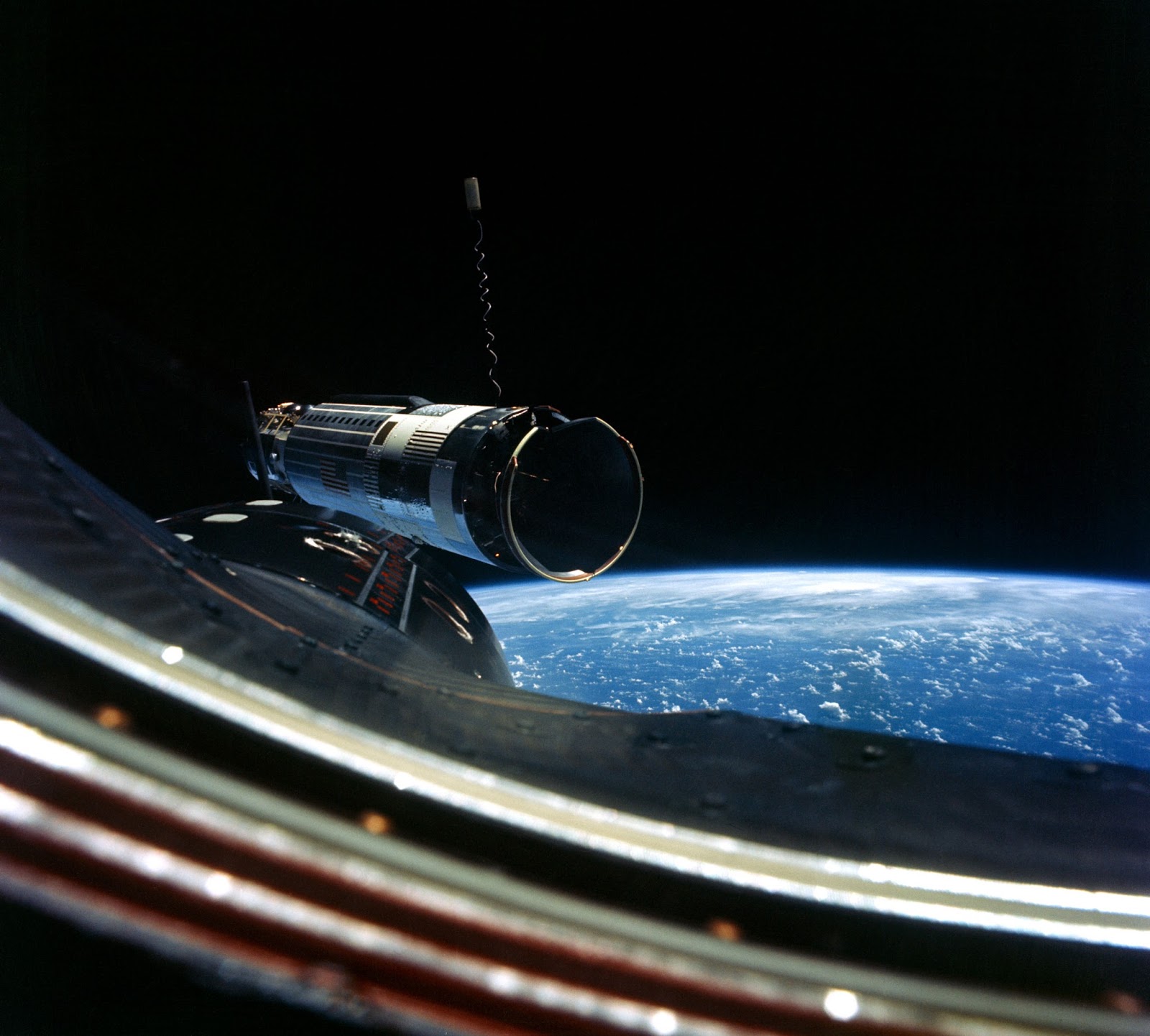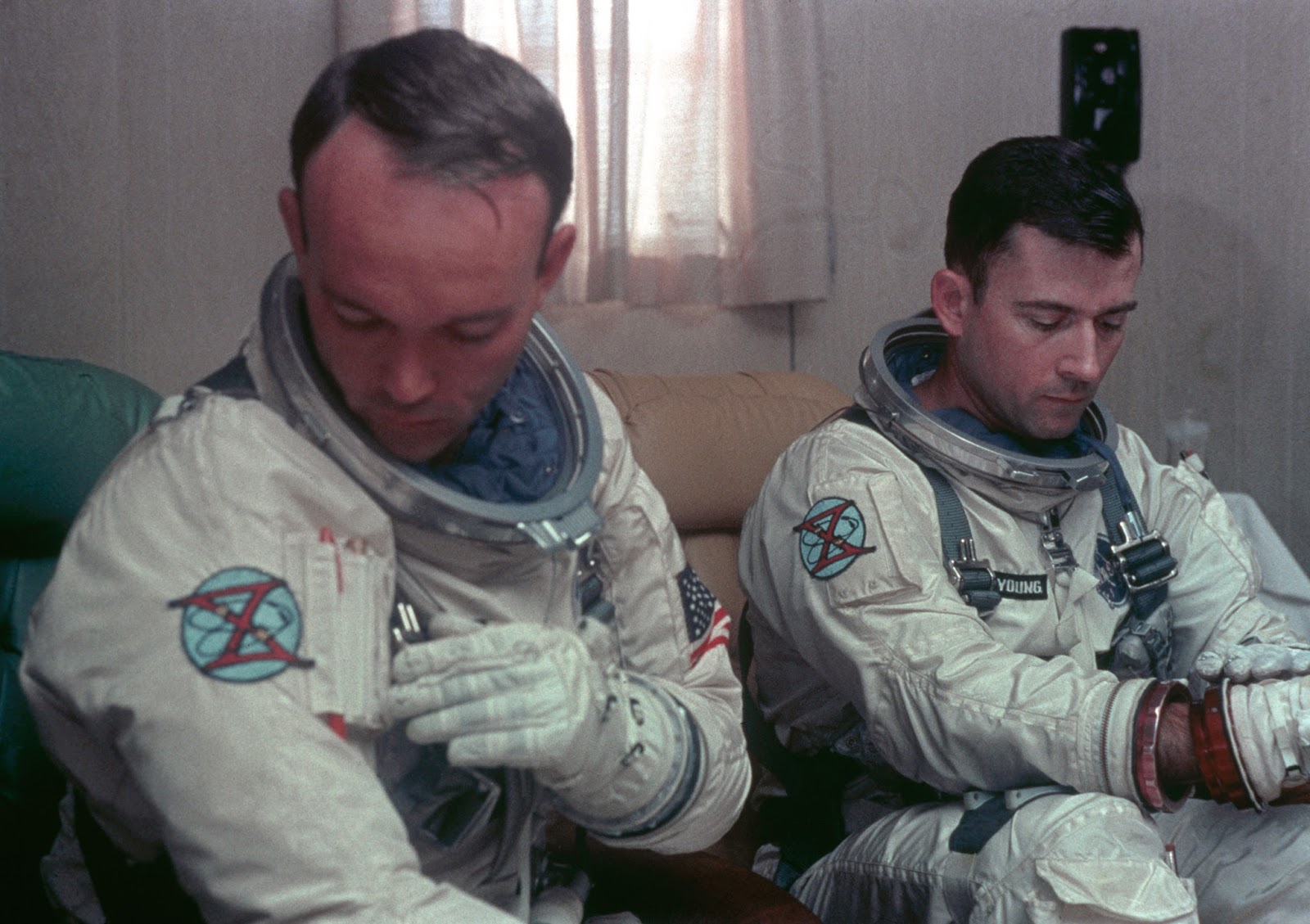After Project High Jump and well before he traveled to the Moon twice and commanded Columbia twice, the late John Young, who died January 5th, was one of the astronauts who bridged the gap between the one-man Mercury missions and the much more ambitious Apollo lunar missions. While many tributes and obituaries focus on his status as a moonwalker and/or STS-1’s commander, it’s my opinion that his achievements during 1966’s Gemini 10 mission are almost criminally underrated. Here’s why:
Gemini, “The Bridge”
Michael Collins’ 1988 book Liftoff characterized the Gemini program as “The Bridge.” That’s a good way to describe it: this two-man program functioned as a series of sequential steps to get the United States from the simpler Mercury missions to the rendezvous-heavy Apollo lunar missions that were still under development. While rendezvous had been accomplished between two spacecraft in December 1965 (Gemini 6A/7), another key objective, docking, hadn’t yet taken place by year’s end. Gemini 8’s mission objectives changed dramatically from successfully docking to merely survival. In a sense, so did Gemini 9A’s, with Gene Cernan’s wild, truncated spacewalk (see the chapter “The Spacewalk From Hell,” inhis book The Last Man On The Moon). In addition, the prospects of docking with an Augmented Target Docking Adaptor (after the mission’s Agena Target Vehicle was lost due to an Atlas launch vehicle failure) were thwarted by an errant payload fairing that was famously called “The Angry Alligator.”
That left Gemini 10, which would be characterized as the “Everything But The Kitchen Sink” mission. The objectives: rendezvous with not only one, but two, spacecraft. The Gemini spacecraft would “visit” the dead Gemini 8 Agena Target Vehicle, and dock successfully with a live Agena. The command pilot in the driver’s seat would be John Young, who at age 35 was already a spaceflight veteran, having flown alongside Gus Grissom in March 1965 during Gemini 3. Young and pilot Collins were underway aboard a Titan II launch vehicle on July 18, 1966.
Young In The Driver’s Seat
Collins’ Liftoff sheds a little light into Young’s personality, which could be best characterized as inscrutable (Collins called him “mysterious” in his 1973 book Carrying The Fire). One notices when Young gets nervous (especially with Collins outside of the spacecraft), he uses the nickname “babe” a lot (“Well, babe, if I don’t translate down soon, we’re going to run into that buzzard” is a classic Young-ism). Collins also related that when Houston asked Young for a propellant reading “while I am cranking the hatch locking handle,” after his second EVA, Young doesn’t like that at all and growls, “Get serious.”
The road to rendezvous and docking isn’t an easy one, either. Collins wrote:
John is flying and I am alternating peering out of the window and reading numbers from our computer. At a mile out, we are closing at 25 mph, which is about right. But then things start to go wrong. We have gotten off to one side somehow and our closing rate has dribbled off to zero. We have to thrust toward the Agena again and now we are swinging around it in a tightening arc. We have done this in the simulator and we don’t like it a bit. “Woah, woah, woah, you bum!” John yells.
The two crewmen, Collins revealed, called this maneuver a “whifferdill” in the simulator.By the time the two spaceships were docked, fuel had dwindled to 36% instead of an expected 60%. Collins later added at bedtime, “John is morose because of our excessive fuel usage…[we] are not in a happy mood after our first day in space…I have failed my Magellan test.” (Young had nicknamed Collins “Magellan” for his navigational skills.) The fuel issue was later determined not to be Young’s fault. He was later quoted in 1996 as relating, “The primary rendezvous was characterized, I think, by a large out-of-plane error. When we realized this was taking place, we could no longer let orbital mechanics work for us…We were working for it. We had to use what I call a brute force method of rendezvous, and it takes a lot of fuel.”
On mission day three, the crew separated from the Agena and went to “visit” Gemini 8’s Agena, which Young flew alongside in formation, approximately 10 feet away.
While Collins still had an EVA to perform and multiple experiments to undertake, and despite their mixed feelings about fuel consumption, Young and Collins had performed a historic achievement: Gemini 10 would be the first time ever that a spacecraft had rendezvoused with two separate spacecraft. They had docked with a space vehicle as well, this time with no life-threatening complications. These milestones were useful not only for Young’s later Apollo missions (10 and 16), but also were key for Apollo in general, and future space station missions.
The Legacy
I’m sure in the coming weeks, much more will be written about John Young’s missions and legacy in general, but it more than bears mention that well before he conquered the Moon and mastered the Shuttle, Young must also be remembered for helping us pioneer and perfect the techniques that got us to the Moon and to the ISS.
Much more about Gemini 10 can be found in Young’s book Forever Young, Collins’ Carrying The Fire, and the NASA History book On The Shoulders of Titans: A History of Project Gemini.
Emily Carney is a writer, space enthusiast, and creator of the This Space Available space blog, published since 2010. In January 2019, Emily’s This Space Available blog was incorporated into the National Space Society’s blog. The content of Emily’s blog can be accessed via the This Space Available blog category.
Note: The views expressed in This Space Available are those of the author and should not be considered as representing the positions or views of the National Space Society.




















